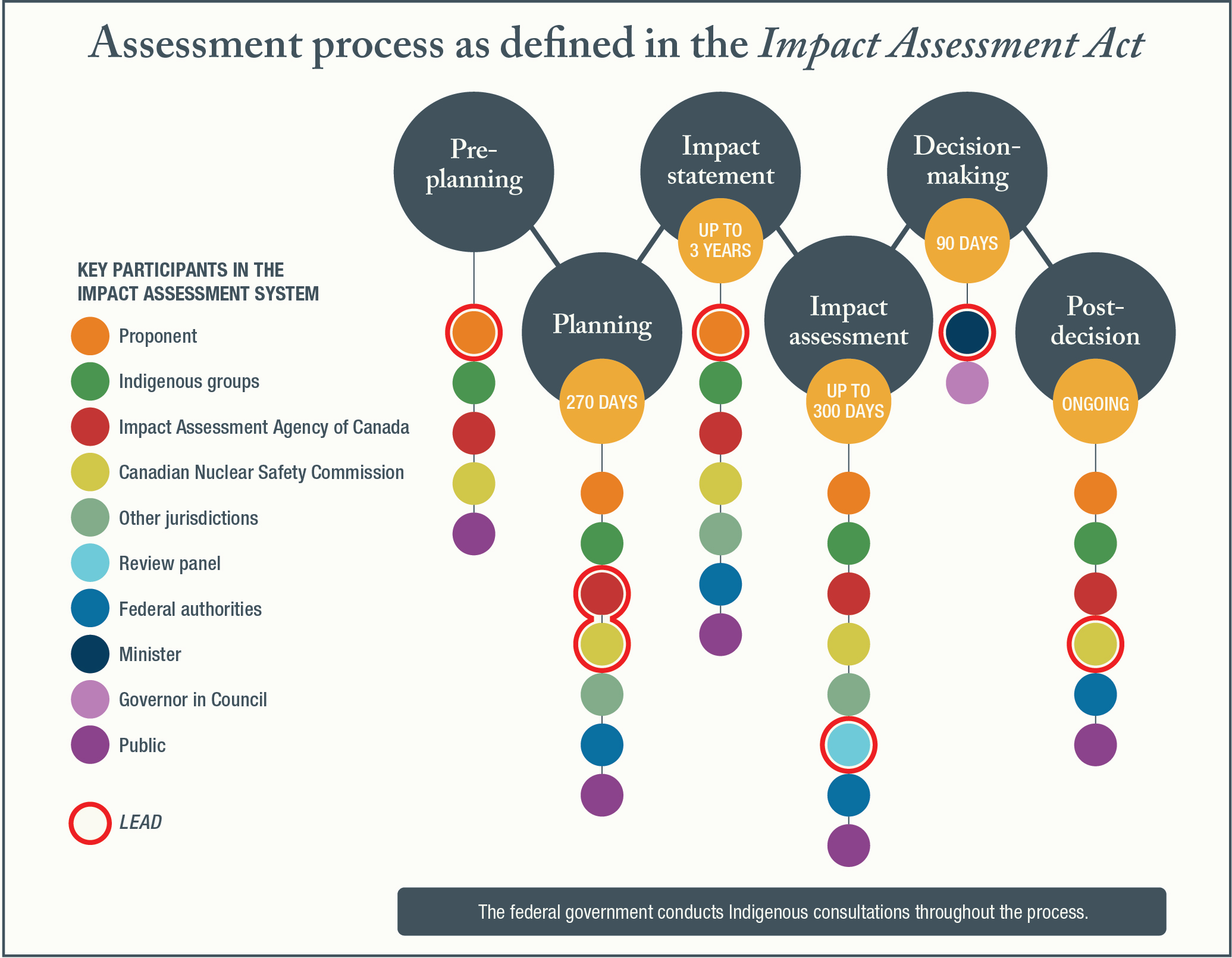
Regulatory decision-making process
The NWMO will:
- Prepare with community input the submissions to start the regulatory decision-making process; and
- Start the regulatory decision-making process with partner communities.
We expect to formally notify the regulators that we will be starting the regulatory decision-making process shortly after site selection and target our initial submissions for 2025.
Our site investigations and associated technical studies, in advance of this process and once it is underway, must follow all relevant municipal, provincial and federal requirements. To ensure we achieve this, the NWMO monitors and adapts our activities to all regulatory changes that affect the project. For example, we adapted our plans to conduct studies that are consistent with the Impact Assessment Act that came into force in 2019.
We also continue to engage with the Canadian Nuclear Safety Commission (CNSC) in preparation for the eventual submission of a licence application, consistent with the terms of a special project arrangement already in place.
- Develop impact assessment methodologies in collaboration with municipal and Indigenous siting area communities in preparation for formally launching the regulatory decision-making process;
- Work with communities and others to identify opportunities to enhance our understanding of the current local and regional conditions, including collaboration with Indigenous communities to align Indigenous Knowledge with this understanding as a foundation for the environmental, social, health and economic assessments;
- Building on the work completed on safety from a social perspective up to site selection, continue to work with community members to understand their issues and concerns, and address them in our designs and studies;
- Establish environmental monitoring programs in potential siting areas in close collaboration with community members and Indigenous Knowledge Holders;
- Work with potential host communities to define their role in the regulatory decision-making process and then facilitate their participation;
- Obtain from the Impact Assessment Agency of Canada (IAAC), the CNSC and other regulatory authorities clarity regarding the requirements of the Impact Assessment Act and implementation under the act;
- Prepare and submit materials required to initiate the federal impact assessment and CNSC licensing; and
- Begin the integrated impact assessment and licensing process, and prepare the necessary reports after we have received the Site-Specific Impact Assessment Guidelines and Permitting Plan from the IAAC.
The regulatory decision-making plan
All regulatory decisions will involve independent review by federal and provincial regulators and an appointed review panel. The process will be open and transparent and involve members of the public who choose to participate.
- An impact assessment under the Impact Assessment Act; and
- Licensing under the Nuclear Safety and Control Act.
Together, these processes will help the federal government assess various aspects of the project, including safety, sustainability, adverse effects, national security and whether it is in the public interest.
The NWMO and host communities for the project will undertake a substantial work program, studying the potential impacts of the project, including cumulative effects, and identifying any necessary mitigations. Overall, our target is to have received the necessary regulatory approvals to transition to site preparation by 2030.

